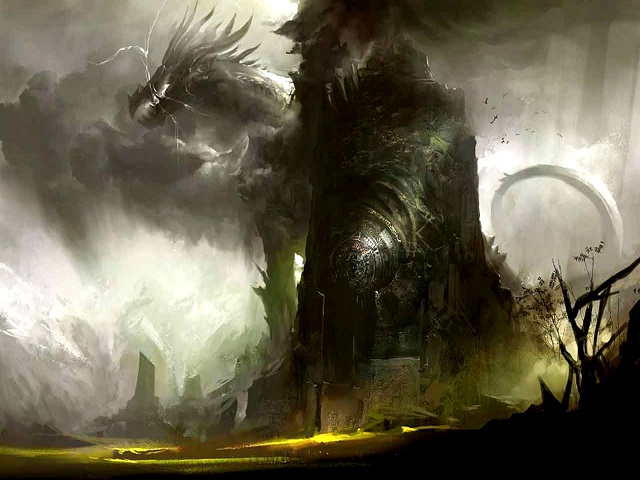
| Category | Events |
| Type | Dragon Wake |
| Location | Aerie of Dragons, Grashakh, others |
| Period | 1575 HE - 1576 HE |
The Third Dragon Wake came from the machinations of the Tinvaakin Kurtulmak. Knowing full well they would suffer too, these kobold sorcerers went ahead with the Dragon Wake Ritual.
The Third Dragon Wake was to be worse than the two before. The dragons that came out of their slumbers were some of the biggest and meanest wyrms we had ever seen. These were obviously beasts on sleep cycles lasting centuries. A few of these dragons hadn't spread their wings since the time of angels and titans.
It is said that during a Dragon Wake, the dragons have all their mental facilities, yet display almost unbounded rapacity, more brazen and an unquenchable hunger.
Time and time again, we tried to buy off an attacking dragon, only to have it turn on us a few days later. The dragon frenzy was not limited to just the chromatic dragons, the others also acted unusual, though they at least were less likely to renege on deals.
The Third Dragon Wake had its pluses, like ushering in the downfall of Mir'piamauza and Zeymah'kein, culling the dragon population, the problematic tribes around us.
- Grishnag, of Tinvaakin Kurtulmak, from his book - "The Third Dragon Wake"
Like previous Dragon Wakes, the dragons of the Third Dragon Wake caused mayhem and devastation across the Aerie of Dragons and into adjacent regions. This devastated the civilizations of the Mir'piamauza and the Zeymah'kein, the goal of Ashmerthoon, proxy to Kurtulmak. The dragons also attacked those who had abruptly made all the dragons wake on cue. Ashmerthoon lost a quarter of her population to the dragon scourge and suffered massive property damage.
Lasting only a year, the Third Dragon Wake ushered in the downfall of both the Zeymah'kein and the Mir'piamauza. Their downfall allowed Ashmerthoon's economy, population and territory to grow and made them an uncontested power in the central reaches of the Aerie of Dragons for nearly a 1,000 years.